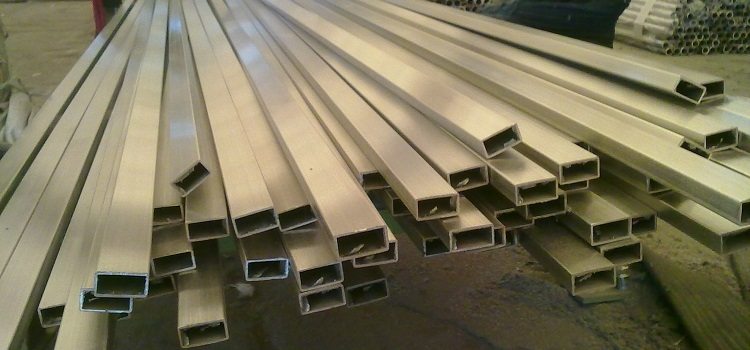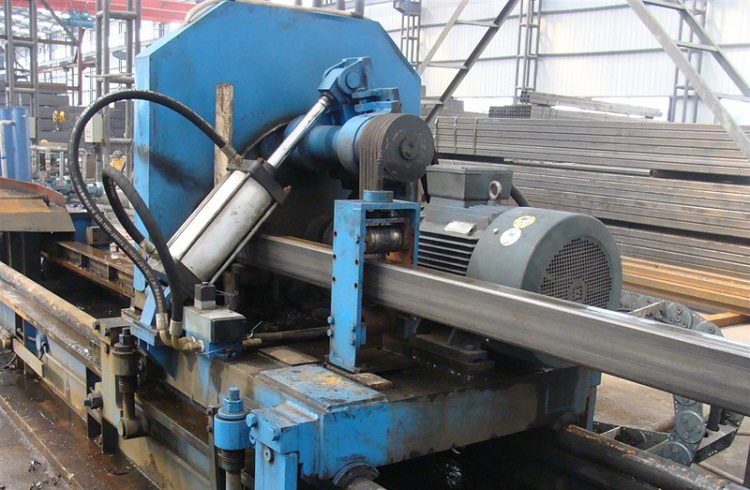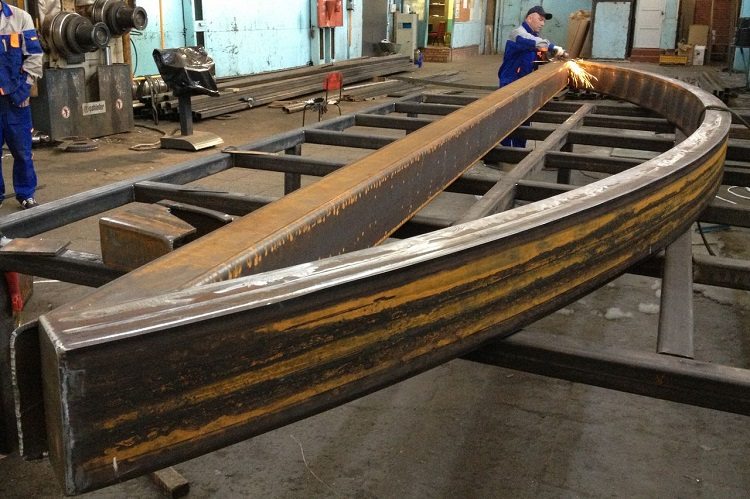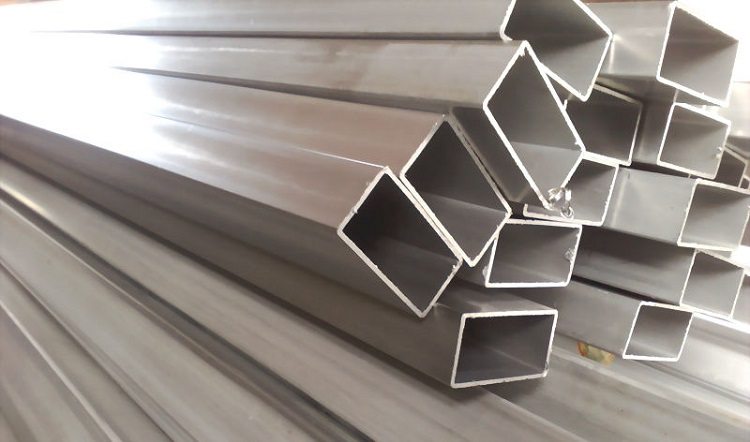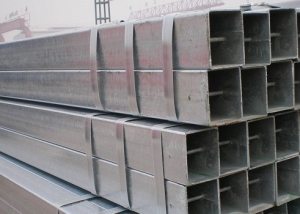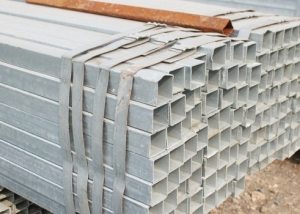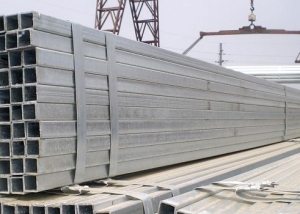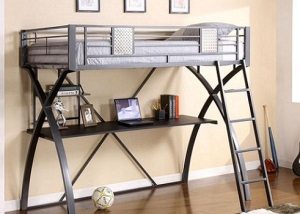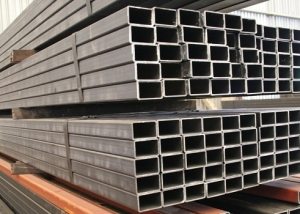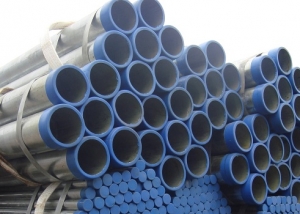Rectangular pipes are one of the most demanded types of profile steel metal rolling. They are used to create metal structures where significant loads are expected. Products of this section have additional stiffening ribs, due to which their bearing capacity increases. As an element of the pipeline, a rectangular steel pipe is used only in exceptional cases.
Content
Production of specialized products
Depending on the manufacturing technology, products of this type are divided into:
- electric welded pipes;
- pipes seamless.
The latter, in turn, are cold drawn and hot rolled. Consider the manufacturing technology of these products in more detail.
Electro-welded products are made of flat steel sheet - strip. Manufacturing technology in this case looks like this:
- The strip coming from the rolls is cut into strips of the required width, which are then folded and wound onto a drum.
- Steel tape from the drum is fed to the rollers, where it is folded into a pipe.
- The joint is welded.
- After that, the product is given a rectangular shape on the calibration shafts.
- Then a flaw detection is carried out, involving the quality control of the weld.
- At the final stage, a rectangular pipe is cut into pieces of the required length. They must be inspected for the correct geometry, which can be disturbed by significant wear on the rollers or those present on them are jagged. The products will go to the finished goods warehouse only if defects are not detected.
Weld welding of steel rectangular pipes is performed in one of two ways:
- HF - welding by induction currents;
- TIG - welding in an inert environment.
The HF process is several orders of magnitude more productive, but the TIG technology provides the final product with higher strength characteristics. It is also possible laser and plasma welding.
As raw materials for the production of seamless hot-deformed pipes, round billets are used, which are steel monolithic cylinders, called "rods". The production process includes the following steps:
- Heated rods in a metallurgical furnace.
- Then the workpiece is fed to the flashing unit, on which the hollow in the form of a sleeve is obtained from the monolithic cylinder.
- A hot and plastic sleeve passes through several groups of rollers, where it acquires the required diameter and the desired wall thickness. This is achieved by rolling on the mandrel, followed by pulling the workpiece.
- The necessary profile of steel rectangular pipes is formed by calibrating the exact parameters of the sleeve.
- After cooling the product, segments of a given length are cut.
Important! The temperature of the workpiece should slightly exceed the rate of recrystallization of the metal. So the steel will gain elasticity, which will allow it to easily deform.
According to the above-described scheme, cold-formed sectional rolled steel is also manufactured. The difference is that immediately after leaving the firmware unit, the hollow billet (sleeve) is cooled by water.That is, all subsequent operations to form the profile of the pipes are carried out in cold form.
But one cannot do without heat treatment. It is carried out at the final stage and is designed to relieve stress in steel, which is always fixed in the production of metal pipes using cold deformation technology. If it is not leveled, the durability and strength of metal structures mounted on the basis of rectangular steel pipes will decrease significantly.
Products made by cold or hot rolling are less widely used than welded pipes. And this is despite the fact that the strength of the latter is inferior to this indicator of rolled products! Experts explain this phenomenon with features, in particular, the considerable cost of cold and hot rolled technologies.
GOST and assortment
The assortment of steel rectangular seamless pipes contains products whose sizes are presented in the table.
Table 1
| GOST 8731, 8732. Dimensions of hot-deformed seamless rectangular pipes (millimeters) | ||||||||||
| 429x9 | 377x9 | 325x 10 | 325x8 | 273x 10 | 273x8 | 219x 10 | 219x8 | 219x7 | 219x6 | 194xx7 |
| 168x8 | 168x7 | 168x6 | 159x8 | 159x7 | 159x6 | 159x5 | 152x 16 | 146x5 | 133x6 | 133x5 |
| 127x5 | 121x 20 | 121x6 | 114x6 | 114x5 | 108x6 | 108x5 | 108x4 | 102x6 | 102x5 | 102x4 |
| 89x6 | 89x5 | 89x4 | 89x 3 | 76x6 | 76x5 | 76x4 | 60x4 | 57x4 | 45x4 | |
In addition, a range of rectangular steel pipes with special sizes has been defined.
table 2
| Special dimensions for rectangular pipes | |||||
| 230x110 | 200x120 | 196x170 | 190x120 | 180x145 | 160x130 |
| 140x60 | 140x50 | 90x50 | 70x50 | 40x28 | 28x25 |
The wall thickness varies within 18 mm. Profile rectangular pipes are produced in normal and high precision.
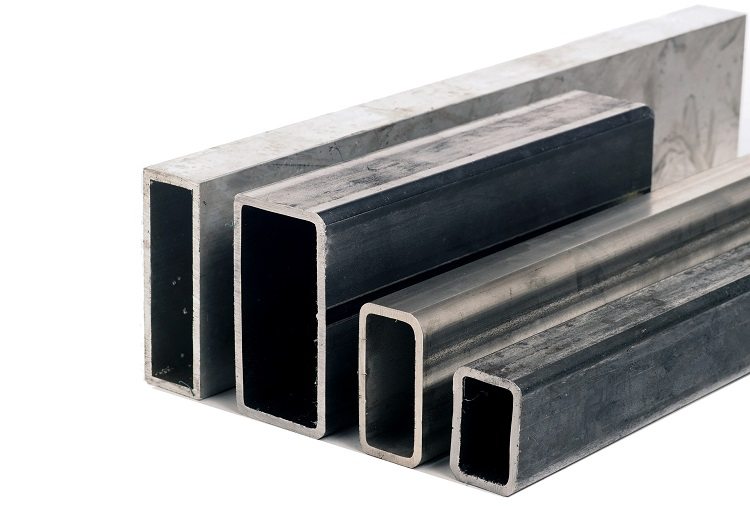
In the assortment of steel pipes, you can find products with different side sizes and wall thickness
Advice! When choosing one or another type of this metal product, pay attention not only to the geometric parameters of the pipes. The technology of their manufacture is also an important factor.
As for the minimum and maximum permissible deviations of sizes from standard values, the picture is as follows:
- Wall thickness;
- external characteristics: from (electric-welded pipes up to 30 mm and cold-rolled products of increased production accuracy) to (hot-deformed pipes of normal accuracy);
- concavity or convexity of the sides of the pipes: from 0.5 to 1 millimeter (cold-formed and welded) and from 0.5 to 2 millimeters (hot-formed product).
A wide range of steel rectangular pipes predetermines the variety of weight characteristics of such products. The mass of one running meter, depending on the wall thickness and size, is presented in table No. 2.
table 2
| Weight 1 pog. m kg | Wall thickness mm | Size of the sides of the section, mm |
| 4,93 | 4 | 80x40 |
| 4,39 | 3,5 | 80x40 |
| 3,83 | 3 | 80x40 |
| 4,630 | 2,5 | 80x40 |
| 3,720 | 2,0 | 80x40 |
| 2,800 | 1,5 | 80x40 |
| 4,260 | 2,5 | 80x30 |
| 3,420 | 2,0 | 80x30 |
| 2,580 | 1,5 | 80x30 |
| 4,260 | 2,5 | 70x40 |
| 3,420 | 2,0 | 70x40 |
| 2,580 | 1,5 | 70x40 |
| 3,860 | 2,5 | 70x30 |
| 3,100 | 2,0 | 70x30 |
| 2,340 | 1,5 | 70x30 |
| 3,860 | 2,5 | 60x40 |
| 3,100 | 2,0 | 60x40 |
| 2,340 | 1,5 | 60x40 |
| 2,794 | 2,5 | 60x30 |
| 2,108 | 2,0 | 60x30 |
| 3,320 | 1,5 | 60x25 |
| 2,700 | 2,0 | 60x25 |
| 2,037 | 1,5 | 60x25 |
| 3,020 | 2,5 | 60x20 |
| 2,449 | 2,0 | 60x20 |
| 1,848 | 1,5 | 60x20 |
| 3,470 | 2,5 | 50x40 |
| 2,790 | 2,0 | 50x40 |
| 2,100 | 1,5 | 50x25 |
| 2,449 | 2,0 | 50x25 |
| 1,849 | 1,5 | 50x20 |
| 2,355 | 2,0 | 50x20 |
| 1,778 | 1,5 | 40x25 |
| 2,198 | 2,0 | 40x25 |
| 1,660 | 1,5 | 40x20 |
| 2,057 | 2,0 | 40x25 |
| 1,554 | 1,5 | 40x25 |
| 1,853 | 2,0 | 40x20 |
| 1,401 | 1,5 | 40x20 |
| 1,554 | 2,0 | 30x20 |
| 1,178 | 1,5 | 30x20 |
| 1.225 | 2,0 | 25x15 |
| 0,930 | 1,5 | 25x15 |
| 0,620 | 1,0 | 25x15 |
| 1,070 | 2,0 | 20x15 |
| 0,810 | 1,5 | 20x15 |
This table shows the estimated (theoretical) mass of this product. Actual weight of the final product may vary by 12%.
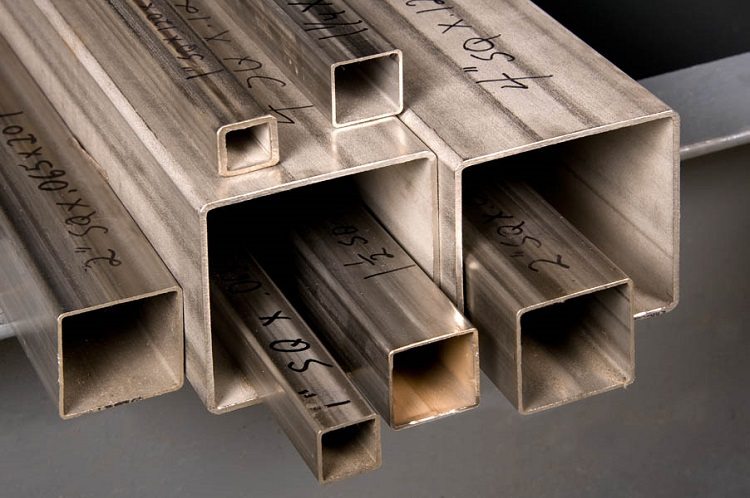
The size of the pipe and the thickness of its walls affects the weight of a running meter of the product
Stainless Steel Rectangular Tubes
The production of products of this type, in principle, is no different from the methods for manufacturing profile pipes using corrosion-resistant steels. However, the requirements for their strength are lower. After all, they are not used as massive supporting metal structures due to the high cost of stainless steel. Accordingly, rectangular welded pipes are the best option. Moreover, produced by the most inexpensive technology - HF-welding.
It would be logical to look for an assortment of such products in standards. But there is no separate GOST for a rectangular corrosion-resistant pipe. There are only standards that specify the requirements for raw materials used for its formation. They are as follows:
- on cold-deformed seamless stainless steel pipe GOST 9941-81;
- on a hot-deformed seamless pipe made of stainless steel GOST 9940-81;
- on an electric welded pipe made of stainless steel GOST 11068-81.
These GOSTs should be guided primarily by manufacturers.Regarding the sizes of rectangular stainless steel pipes, consumers will find relevant information in GOST 6845-68, the effect of which extends to products made of corrosion-resistant steel.
Good to know! All responsible trustworthy manufacturers post a full range of products on their web resource.
The use of shaped pipes
A variety of sizes and strength characteristics of rectangular steel pipes allows them to be used in many areas of modern production activities. Of these products are produced:
- frames of supporting structures. Pipes with a large wall thickness and with large dimensions (for example, 190x120, 196x170, etc.) guarantee the unique reliability and durability of any object, whether it is an office-administrative building, a sports arena, an entertainment center or a huge supermarket. In fairness, it should be recalled that for excessively "loaded" structures, it is still not a profile that is used, but an I-beam;
- decorative fences. As a rule, they are made from small-sized stainless steel tubes, and their popularity is due to many factors. The main ones are the attractive appearance of the material and truly high anti-corrosion properties.
- reliable furniture inexpensive. It can be successfully operated in child care facilities and organizations with a large flow of visitors. We all saw chairs and desks made of rectangular pipes for schoolchildren and university students, tables in various institutions and more;
- greenhouse private buildings (small greenhouses). Relatively cheap profiles of small sizes do an excellent job of fulfilling the functions of a framework on which a film is stretched to protect plants from adverse weather conditions;
- vehicle frames. In the automotive industry, rectangular steel pipes were most widely used, the sizes of which vary from 40x25 to 100x57.
The use of products of this type in the construction industry is limited to supporting structures, as well as decorative finishes. When creating utilities, preference should be given to ordinary round pipes.
